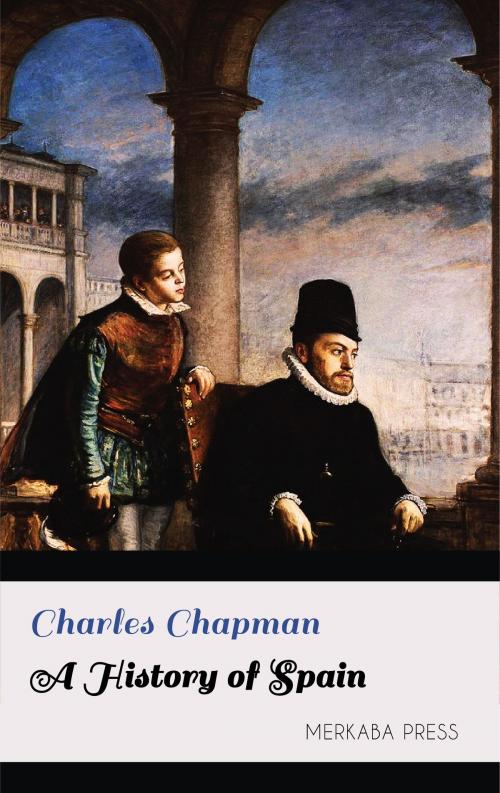| Author: | Charles Chapman | ISBN: | 6610000018338 |
| Publisher: | PublishDrive | Publication: | July 5, 2017 |
| Imprint: | Merkaba Press | Language: | English |
| Author: | Charles Chapman |
| ISBN: | 6610000018338 |
| Publisher: | PublishDrive |
| Publication: | July 5, 2017 |
| Imprint: | Merkaba Press |
| Language: | English |
THE Iberian Peninsula has not always had the same form which it now has, or the same plants, animals, or climate which are found there today. For example, it is said that Spain was once united by land with Africa, and also by way of Sicily, which had not yet become an island, with southern Italy, making a great lake of the western Mediterranean. The changes as a result of which the peninsula assumed its present characteristics belong to the field of geology, and need to be mentioned here only as affording some clue to the earliest colonization of the land. In like manner the description of the primitive peoples of Spain belongs more properly to the realm of ethnology. It is worthy of note, however, that there is no proof that the earliest type of man in Europe, the Neanderthal, or Canstadt, man, existed in Spain, and it is believed that the next succeeding type, the Furfooz man, entered at a time when a third type, the Cromagnon, was already there. Evidences of the Cromagnon man are numerous in Spain. Peoples of this type may have been the original settlers of the Iberian Peninsula. Like the Neanderthal and Furfooz men they are described generally as paleolithic men, for their implements were of rough stone. After many thousands of years the neolithic man, or man of the polished stone age, developed in Spain as in other parts of the world. In some respects the neolithic man of Spain differed from the usual European type, but was similar to the neolithic man of Greece. This has caused some writers to argue for a Greek origin of the early Spanish peoples, but others claim that similar manifestations might have developed independently in each region. Neolithic man was succeeded by men of the ages of the metals,—copper, bronze, and iron. The age of iron, at least, coincided with the entry into Spain of peoples who come within the sphere of recorded history. As early as the bronze age a great mixture of races had taken place in Spain, although the brachycephalic successors of the Cromagnon race were perhaps the principal type. These were succeeded by a people who probably arrived in pre-historic times, but later than the other races of those ages—that dolichocephalic group to which has been applied the name Iberians. They were the dominating people at the time of the arrival of the Phœnicians and Greeks...
THE Iberian Peninsula has not always had the same form which it now has, or the same plants, animals, or climate which are found there today. For example, it is said that Spain was once united by land with Africa, and also by way of Sicily, which had not yet become an island, with southern Italy, making a great lake of the western Mediterranean. The changes as a result of which the peninsula assumed its present characteristics belong to the field of geology, and need to be mentioned here only as affording some clue to the earliest colonization of the land. In like manner the description of the primitive peoples of Spain belongs more properly to the realm of ethnology. It is worthy of note, however, that there is no proof that the earliest type of man in Europe, the Neanderthal, or Canstadt, man, existed in Spain, and it is believed that the next succeeding type, the Furfooz man, entered at a time when a third type, the Cromagnon, was already there. Evidences of the Cromagnon man are numerous in Spain. Peoples of this type may have been the original settlers of the Iberian Peninsula. Like the Neanderthal and Furfooz men they are described generally as paleolithic men, for their implements were of rough stone. After many thousands of years the neolithic man, or man of the polished stone age, developed in Spain as in other parts of the world. In some respects the neolithic man of Spain differed from the usual European type, but was similar to the neolithic man of Greece. This has caused some writers to argue for a Greek origin of the early Spanish peoples, but others claim that similar manifestations might have developed independently in each region. Neolithic man was succeeded by men of the ages of the metals,—copper, bronze, and iron. The age of iron, at least, coincided with the entry into Spain of peoples who come within the sphere of recorded history. As early as the bronze age a great mixture of races had taken place in Spain, although the brachycephalic successors of the Cromagnon race were perhaps the principal type. These were succeeded by a people who probably arrived in pre-historic times, but later than the other races of those ages—that dolichocephalic group to which has been applied the name Iberians. They were the dominating people at the time of the arrival of the Phœnicians and Greeks...















